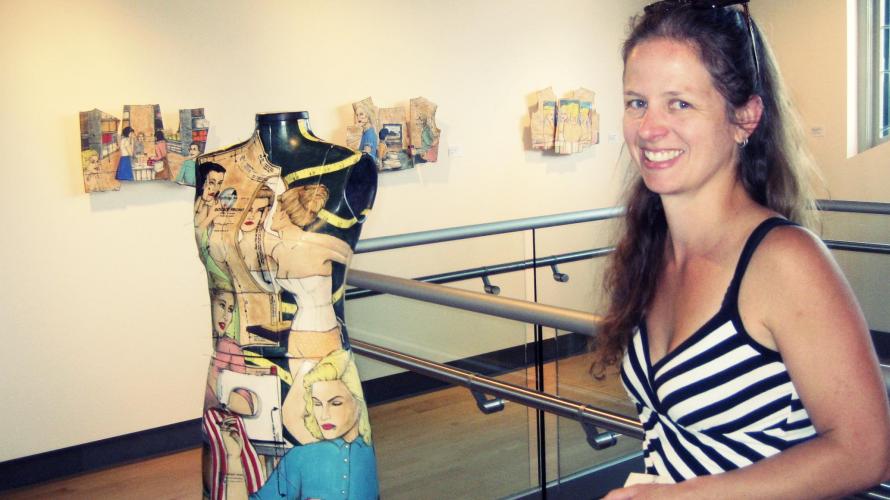

Brian D'Ambrosio is a writer/editor living in Missoula.
*****************
Shalene Valenzuela’s ceramic and porcelain art provides much to ponder.
For starters, within her pieces lurks a mild – and at times not so lenient – criticism of
consumption modes, consumerism, societal expectations, etiquette, and delineated
gender roles.
In addition to these themes, her sculptures prod fun at our society’s pervasive
construction of nostalgia as yet another form of relentless consumption.
“A lot of the imagery I’ve pulled from dated sources,” says Valenzuela. “It comes
from the era my mother and grandparents grew up in, from old photos, magazines
and yearbooks, and the advertising of the social, political events of their days. It all
seems so innocent, but that is so far from the truth.”
Through the hand-painting or screen-pressing of symbols, faces, and imagery on
thin, fragile objects, Valenzuela exposes contradictions in advertising, culture, and
society. Beneath the shiny veneer we see that the world is a perpetual caricature
of itself; every moment discloses the contradiction of what we pretend to be. She
understands that the world is a charming inconsistency and that every time we
take a step forward that we, in truth, revert back to the same primitive habits and
patterns. We are programmed that way, we are not only constructed to stand in
opposition to our own selves, but to philosophize our daily conflicts.
What Shalene’s art does so well is to rein in that ambiguity and repetition, or, at very
least, sleekly push those forces out into the open. Indeed, the action taking place in
her narratives relates to “a pattern,” says Valenzuela, “a rut in life,” something we
replicate on a daily basis and do so unquestioningly.
Since much of her imagery is culled from “dated” sources, we see “an idealized
time” in society and advertising. We see fashionable clothing, cookbooks, trendy
hair styles, the latest cosmetics and appliances, the staid pursuit of the inanimate;
the decadent swamp of consumerism bogging citizens down; cosmetics covering
up self-hatred. Valenzuela’s eschews the notion that we must be forced to equate
products and services with our human well-being. And she exposes the roots,
origins, and perhaps (hopefully) the zenith of this madness.
Jabbing holes at fairytales and urban myths through the faces of smiley, yet unhappy
ladies from a Time magazine Tupperware ad may seem a bit brusque to some eyes.
But, in actuality, a variety of women’s issues are executed with a jokey, often ironic
tone.
“It has more to do with the expression and glances on the faces of those painted and
what’s being implied by the actions,” says Valenzuela, who currently serves as the
director at the Clay Studio of Missoula and teaches at Flathead Valley Community
College. “I hope that the imagery of that old advertising captivates, but I would also
like the viewer to investigate more, to investigate those things that you can’t tell or
know from afar.”
Shalene’s work is aesthetically beautiful– pretty telephones, seemingly delicate
clay hammers and boards, but it also has a lot of depth, for her pieces explore the
interaction of humanity, nature, and mystery. Everything we see hides another
thing, and we want to see what is hidden by what we see.
While the issues she explores generally delve into the very tangible psychology of
self-esteem and self-perception, she knows full well that true art evokes a feeling of
mystery – a mystery without which the world as a collective entity would not exist.
Her illustrations and their sense of seriousness are real; the attitude or identity of
the subject is guesswork.
To Shalene, art is the practice of supplying content and thought, a method of
provoking a substantive discussion of earlier times and a way to better comprehend
the generally accepted behaviors of the present. It is her way of halting what never
stays still, of pinning down the elusive foe called time.
Valenzuela says, “Really, the art you see comes down to a moment in time, a moment
in time with an implied past and an implied future, which gives the viewer a hint
into the patterns of life. I hope there is more to it than at first glance. In the end, I
hope my art evokes questions about those patterns of life.”
